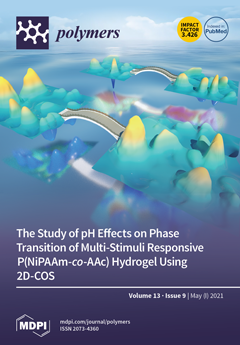Herein, Sb
2Se
3 and β-Cu
2Se nanowires are synthesized via hydrothermal reaction and water evaporation-induced self-assembly methods, respectively. The successful syntheses and morphologies of the Sb
2Se
3 and β-Cu
2Se nanowires are confirmed via X-ray powder diffraction
[...] Read more.
Herein, Sb
2Se
3 and β-Cu
2Se nanowires are synthesized via hydrothermal reaction and water evaporation-induced self-assembly methods, respectively. The successful syntheses and morphologies of the Sb
2Se
3 and β-Cu
2Se nanowires are confirmed via X-ray powder diffraction (XRD), X-ray photoelectron spectroscopy (XPS), Raman spectroscopy, field emission scanning electron microscopy (FE-SEM), and field emission transmission electron microscopy (FE-TEM). Sb
2Se
3 materials have low electrical conductivity which limits application to the thermoelectric generator. To improve the electrical conductivity of the Sb
2Se
3 and β-Cu
2Se nanowires, polyaniline (PANI) is coated onto the surface and confirmed via Fourier-transform infrared spectroscopy (FT-IR), FE-TEM, and XPS analysis. After coating PANI, the electrical conductivities of Sb
2Se
3/β-Cu
2Se/PANI composites were increased. The thermoelectric performance of the flexible Sb
2Se
3/β-Cu
2Se/PANI films is then measured, and the 70%-Sb
2Se
3/30%-β-Cu
2Se/PANI film is shown to provide the highest power factor of 181.61 μW/m·K
2 at 473 K. In addition, a thermoelectric generator consisting of five legs of the 70%-Sb
2Se
3/30%-β-Cu
2Se/PANI film is constructed and shown to provide an open-circuit voltage of 7.9 mV and an output power of 80.1 nW at ΔT = 30 K. This study demonstrates that the combination of inorganic thermoelectric materials and flexible polymers can generate power in wearable or portable devices.
Full article






